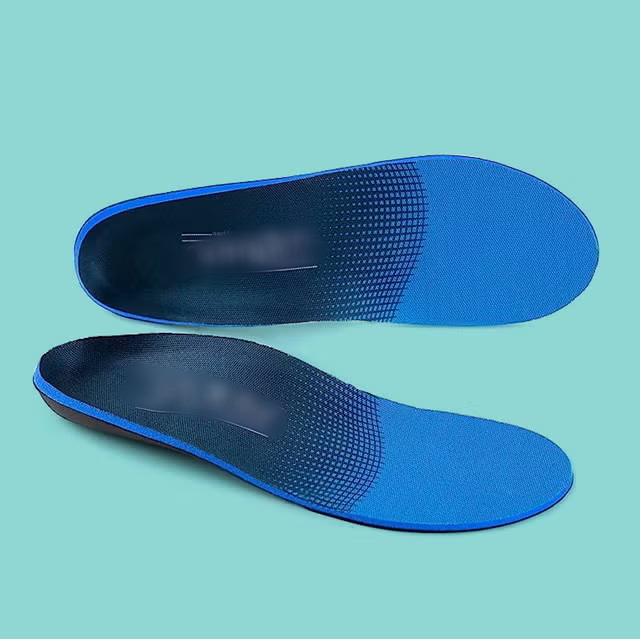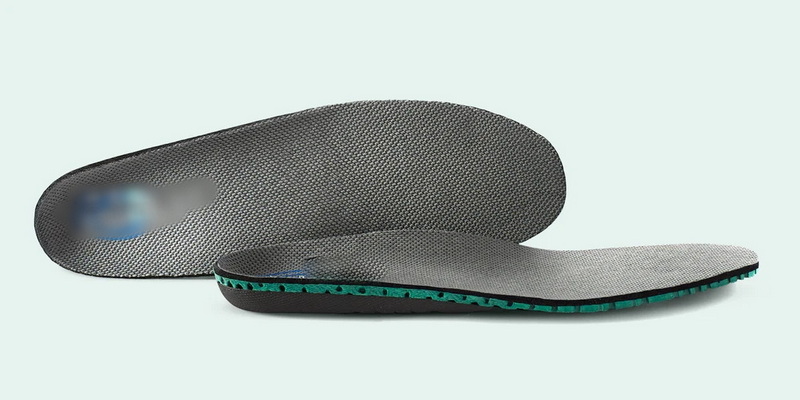










Content Menu
● Key Benefits of Shoe Insoles
>> Pain Relief
>> Enhanced Comfort for Active Lifestyles
>> Improved Posture and Balance
● Scientific Evidence for Insole Effectiveness
>> Fall Prevention and Posture Correction
>> Sports and Occupational Use
>> Limitations of Scientific Studies
● Selecting the Correct Insole
>> Evaluate Material and Durability
● Installation and Maintenance Tips
● Common Misconceptions About Shoe Insoles
● Advanced Technologies in Modern Insoles
● Addressing Limitations and Considerations
● When Should Insoles Be Replaced?
● FAQs
>> 1. How long does it take to get used to new insoles?
>> 2. Can insoles be moved between shoes?
>> 3. Do insoles help with knee or back pain?
>> 4. How often should I replace shoe insoles?
>> 5. Are custom orthotics better than over-the-counter insoles?
Shoe insoles, also called orthotics, footbeds, or inserts, have transformed footwear by providing personalized support, targeted cushioning, and biomechanical correction. Whether addressing chronic foot pain, improving posture, or extending the life of shoes, insoles cater to a wide array of needs. Let's explore their mechanisms, real-world benefits, and the evidence supporting their role in foot health.

At their core, insoles are removable inserts crafted from materials like foam, gel, leather, and advanced plastics. They supplement the minimal support found in standard shoes, or provide medical intervention for specific anatomical issues. Designs range from generic, mass-produced models to custom orthotics created by healthcare professionals.
The primary mechanism is redistribution of pressure and anatomical support. Insoles offset high-pressure zones, correct misalignment, and offer protection to the most sensitive tissues. This results in:
- Relief from pressure points
- Enhanced shock absorption, preventing joint fatigue
- Improved alignment and reduced risk of injuries
- Increased energy efficiency during walking or running
Arch support is essential to maintaining the foot's structural integrity. Insoles designed with built-in arches prevent overpronation (foot rolling inward) and supination (rolling outward), helping to avoid knee, hip, and lower back pain. Deep heel cups add stability during motion.
Targeted cushioning and pressure redistribution provenly relieve symptoms of plantar fasciitis, metatarsalgia, and other common foot complaints. This is especially important for athletes and those on their feet for extended periods.
People who walk, run, or stand for long hours benefit from insoles that reduce fatigue, improve shock absorption, and keep feet comfortable, regardless of the footwear type or activity.
Proper posture starts with the feet. Insoles correct misalignment at the foundation, reducing mechanical stress throughout the lower body. Scientific studies demonstrate improved standing balance and gait performance in older adults as soon as insoles are applied.
Protecting the shoe's midsole and outsole, insoles help distribute wear and tear more evenly, ensuring shoes last longer and maintain form.
Numerous clinical studies indicate that custom and semi-custom orthotic insoles meaningfully address foot pain, especially for plantar fasciitis, arthritis, and metatarsalgia. Well-designed insoles relieve localized stress and prevent the progression of painful conditions.
Meta-analyses show that insoles improve balance and reduce fall rates in seniors, offering tangible benefits for mobility and independence. Tactile varieties, such as textured or vibration-enhanced models, provide additional sensory feedback to bolster postural control, especially after fatigue or sensory decline.
For athletes and those in physically demanding jobs, insoles help prevent movement-related injuries. They support optimal biomechanics, reduce cumulative stress on joints, and enable greater endurance.
While insoles succeed in alleviating many types of foot pain and fatigue, their effect on non-foot-related conditions (like low back pain) is less conclusive. Results vary by study, underlying conditions, and participant demographics. Optimal outcomes depend on correct insole choice and individualized usage.
Ideal for shoes with removable insoles, these provide support and cushioning from heel to toe. Suited for athletic shoes, boots, and work footwear.
Cover only the heel and arch, fitting comfortably inside tighter dress shoes or high heels.
Made based on a physical or digital mold of the foot, these address specific biomechanical problems and are prescribed for severe cases.
Some insoles cater to unique needs—such as motion control for overpronators, extra shock absorption for runners, or diabetic protection for vulnerable feet.
- Individuals with foot pain or diagnosed conditions (plantar fasciitis, arthritis, neuropathy)
- Athletes seeking extra support during activity
- Workers who spend long hours standing
- Older adults with balance or postural concerns
- Anyone wanting enhanced comfort and extended shoe wear

Determine whether you have low, normal, or high arches. If uncertain, consult a podiatrist for an accurate diagnosis.
Match insole features to your lifestyle—select impact-absorbing gel for sports, memory foam for extended standing, or rigid support for alignment correction.
Choose full-length insoles for spacious or removable-insole footwear. Use three-quarter or slim profiles for shoes with limited interior space.
Consider longevity, odor control, and ease of cleaning. Some models include antimicrobial treatments or advanced moisture-wicking fabric.
- Remove any old insoles before inserting new ones.
- Trim insoles to fit your shoes for optimal comfort and performance.
- Clean insoles regularly with mild soap and water; allow them to air dry.
- Rotate insoles between shoes to extend usage lifespan.
- Softness isn't always best: Overly soft insoles can sometimes exacerbate underlying problems by lacking necessary support.
- Universal fit isn't guaranteed: Insoles should match both your foot type and shoe for the best experience.
- Indefinite lifespan isn't realistic: Compression, wear and tear, and odor buildup mean most insoles should be replaced every six to twelve months.
Technological advances have led to insoles with dynamic arch support, memory foam, anti-microbial lining, and real-time vibration feedback. Smart insoles can track gait, balance, and even provide sub-sensory stimulation to enhance postural control, as shown in recently published studies.
While insoles provide relief for many users, they are not universally suitable for every person or condition. For chronic or unexplained pain, professional evaluation and, if needed, custom prescription orthotics may be required. Early discomfort is normal as feet adapt to new support structures.
Signs such as visible wear, diminished cushioning, loss of support, or return of previous symptoms indicate that it's time to replace your insoles. Frequent replacement ensures maximum health and comfort benefits.
Shoe insoles serve as a bridge between your footwear and optimal foot health. Their proven potential to relieve pain, enhance posture, extend shoe life, and boost comfort makes them a valuable investment for a wide range of users. Selecting the proper type, installing them correctly, and maintaining regular replacement schedules are key to harnessing their full benefits.

Most users acclimate within a week, though mild discomfort may occur during the adaptation period.
Yes, most insoles are designed for multiple shoes. Trim as needed for best fit.
They can help if pain originates from foot misalignment. Insoles work best when they address foundational posture issues.
Replace insoles every 6–12 months, or when cushioning breaks down.
Custom orthotics are tailored for specific foot problems, offering more targeted relief. OTC insoles suffice for general comfort and mild pain.